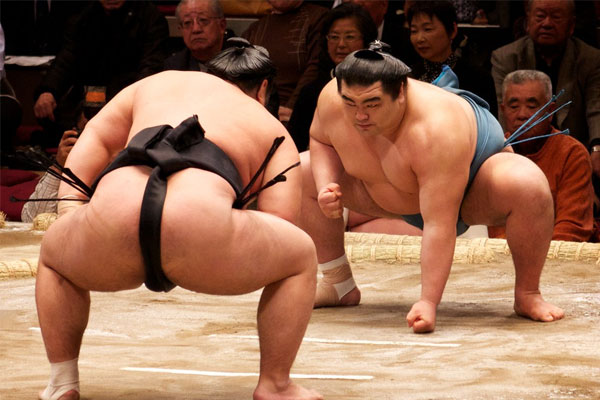Martial Arts Near Me
Sumo
Sumo, a traditional Japanese sport with a history spanning over a millennium, captures the essence of strength, discipline, and cultural significance. With its unique techniques and rituals, sumo has evolved throughout the centuries, transforming from a martial art practice to a professional sport. Today, it continues to be an integral part of Japanese culture and attracts a global audience. Exploring the history, techniques, and current status of sumo offers us an insight into this captivating world.
Sumo's origins date back to ancient times, when it served as a form of entertainment in Shinto rituals and as a military practice among samurai warriors. The earliest recorded mention of sumo can be traced back to the Kojiki, a historical document dating to the 8th century. During the Heian period (794-1185), sumo began to gain recognition as an organized sport. Sumo matches were often held during imperial festivals, and wrestlers were revered for their strength and skill.
Throughout history, sumo underwent several evolutions, and one pivotal moment came during the Edo period (1603-1868). The Tokugawa Shogunate, which ruled Japan during this period, sought to centralize political power while fostering an environment of stability and control. Sumo became an official sport supported by the Shogunate, leading to the formation of professional stables and the rise of professional sumo wrestlers, or rikishi.

Sumo techniques and rules have developed over time, blending tradition with strategic innovation. Matches take place within a circular ring called a dohyō, typically made of clay. Rikishi strive to force their opponent out of the ring or make any part of their body other than their feet touch the ground. Matches are fast-paced and intense, often lasting just a few seconds. However, each bout requires months of training, preparation, and mental fortitude.
A key aspect of sumo is its adherence to strict traditions and rituals. Before each match, wrestlers engage in a series of rituals, such as salt throwing to purify the ring and performing Yokozuna Dohyō-iri, an elaborate ceremony exclusively reserved for grand champions. The attire of the wrestlers, consisting of a mawashi or loincloth, is a symbolic representation of their standing in this ancient sport.
Presently, sumo faces several challenges, both internally and externally, that affect its current status. While sumo continues to be a revered sport in Japan and attracts a dedicated domestic fanbase, its popularity has been dwindling in recent years. The increasing influence of Western sports and the rise of other forms of entertainment have led to a decline in sumo's appeal among younger generations. Additionally, allegations of match-fixing and scandals involving wrestlers have tarnished the sport's reputation.
However, efforts are being made to revitalize sumo and ensure its survival for future generations. The Japan Sumo Association (JSA) has implemented reforms to address the corruption issues, such as stricter governance and a zero-tolerance policy towards misconduct. Furthermore, international tournaments and exhibitions have been held in various countries, promoting sumo on the global stage and expanding its fanbase beyond Japan.
In recent years, sumo has seen an increase in the number of foreign-born rikishi excelling in the sport. With the influx of international talent, sumo has become more diverse and has attracted attention from a broader range of audiences worldwide. Despite the challenges it faces, sumo remains deeply rooted in Japanese culture, preserving its traditional rituals and techniques that have been passed down through generations.
Sumo's history, techniques, and current status paint a complex picture of a sport that has withstood the test of time. From its ancient origins to its modern incarnation, sumo embodies Japan's rich cultural heritage. Although faced with challenges, the sport's efforts to adapt and remain relevant on a global scale ensure its continued existence and captivate audiences both in Japan and beyond. Sumo's sheer power and awe-inspiring techniques continue to enthrall spectators, making it a unique and remarkable sport that will endure for generations to come.